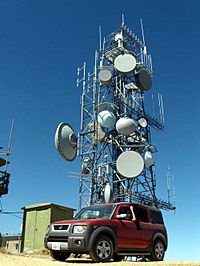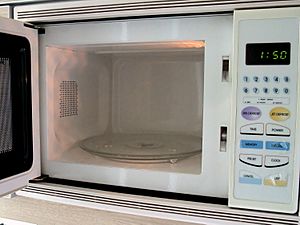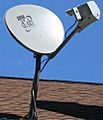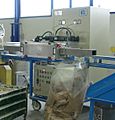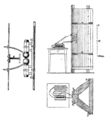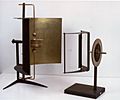Microwave facts for kids
A microwave is a type of radio wave that has a very high frequency (meaning it vibrates very fast). You probably know them best from how they heat food in a microwave oven.
Think about how water moves, with ripples and ocean waves. Many things that move, like light and radio signals, also travel in waves. A very common type of wave in the universe is called an electromagnetic wave. Light is an electromagnetic wave, and so are microwaves. We can only see a small part of these waves, which we call visible light. Microwaves are outside this visible range, so we cannot see them.
Microwaves are also used in other cool technologies. For example, radio telescopes use them to study space. Radar systems, which help us detect objects and measure their speed, also rely on microwaves.
How Microwave Ovens Work
Microwave ovens heat food in a special way. They work by making tiny particles called polar molecules move very fast. Think of these molecules like tiny magnets.
The microwave oven sends out waves that tell all these tiny "magnets" to face one direction. Then, the oven quickly reverses the waves, making the molecules turn the other way. This happens over and over again, incredibly fast!
Heat is simply the movement of molecules. So, when the microwave oven makes these molecules spin and turn quickly, they get hotter. This is how your food heats up.
Water is the most common polar molecule found in food. This is why foods with lots of water, like vegetables or leftovers, heat up well in a microwave. Dry foods, like crackers, don't have much water, so they don't heat as well, or at all. Microwaves are absorbed by these water molecules, but they pass right through non-polar molecules. This is why microwaves can heat food deeply and quickly. It's also why many plastic containers don't get hot in the microwave; the microwaves pass through them to heat the food inside.
You should never put metal in a microwave oven. Metals tend to spark instead of heating up. This happens because metals have electrons that can move easily. When microwaves "push" on these electrons, instead of just turning, the electrons jump around. A lot of electrons moving quickly on metal creates electricity, which we see as sparks.
Images for kids
-
Waveguides are used to carry microwaves. This image shows waveguides and a diplexer in an air traffic control radar.
-
A satellite dish on a house. It receives satellite television signals using a microwave beam from a communications satellite orbiting far above Earth.
-
A small microwave oven on a kitchen counter.
-
Guglielmo Marconi used this 1.2 GHz microwave transmitter (left) and receiver (right) in his 1895 experiments.
-
This is a microstrip circuit used in satellite television dishes.
-
Heinrich Hertz's 450 MHz spark transmitter from 1888.
-
Jagadish Chandra Bose was the first to create millimeter waves in 1894.
-
Augusto Righi's 12 GHz spark oscillator and receiver from 1895.
-
The first cavity magnetron tube, invented in 1940. This device helped power microwave radar.
-
The AI Mark VIII radar, the first microwave air intercept radar, in a British fighter plane.
See also
 In Spanish: Microondas para niños
In Spanish: Microondas para niños


